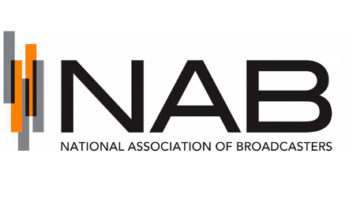The following is excerpted from comments by the National Association of Broadcasters to the Federal Communications Commission. NAB opposes the introduction of a new FM “Class C4” radio service as well as a related procedure in which FM stations could be involuntarily reclassified.
The FCC took comments about these proposals in a notice of inquiry that was prompted by a petition from SSR Communications. NAB argues that the proposals “are a step backwards for the radio industry at a time when radio stations are working through any number of interference issues hampering their service to their listeners.”
The NAB wrote:

As detailed below, a new Class C4 radio service between Class A and Class C3 service will only serve to increase congestion on the already crowded FM band and escalate the risk of interference to other FM services, especially FM translators.
In addition, the FCC should not employ a “triggering” mechanism through which an FM station could file a show cause application that requires another FM station to upgrade to maximum class facilities or be involuntarily designated a Section 73.215 facility. Such an approach would hinder FM broadcasters from improving their facilities in the future or responding to technical and other changes in circumstances beyond their control.
NAB respectfully requests that the commission elect to close this proceeding after the comment period has concluded.
Introducing a New FM Class C4 Radio Service Would Reduce the Technical Integrity of the FM Band and Potentially Cause Substantial Harm to FM Translators
The commission seeks comment on SSR’s proposal to create a new FM station Class C4 in Zone II with a maximum ERP of 12 kilowatts, in between the Class C3 and Class A services. SSR claims that many Class A stations could benefit by upgrading to Class C4. Unfortunately, supporters of this proposal make little allowance for the substantial harm it could impose on the FM band, existing FM stations and their listeners.
It is safe to say that the FM band is already congested. With the recent introduction of thousands of new translators, this is not the time for the commission to introduce a new universe of Class C4 stations that will only increase the risk of interference to other services. Adopting this proposal would undermine the commission’s commitment to safeguard the technical integrity of the FM band to ensure that listeners can receive interference-free, undistorted radio service.
Protecting FM signal quality has never been more important, given the increasingly competitive audio marketplace. Consumers today access music and other programming from a multitude of alternative platforms and devices, including satellite radio, podcasts, online streaming, smart phone applications and other mobile devices. Thus, if a listener cannot tune in to her favorite station, she has many other options to fill that void and may never return.
The commission should be wary of SSR’s proposal because shoehorning more stations into the FM band, or allowing potentially hundreds of Class A stations to essentially double their power output, will inevitably increase the band’s noise floor and cause interference.
SSR’s proposal could be especially problematic for FM translators, which are a critical component of radio service.
Translators allow broadcasters to deliver a good quality fill-in signal to listeners who are unable to access the primary station because of terrain, distance, or building impediments. In addition, FM broadcasters now use translators to provide highly-valued programming on HD Radio multicast channels, such as weather and foreign language content. Pursuant to the commission’s AM Radio Revitalization proceeding, thousands of AM broadcasters now use cross-service translators to provide new and improved service, especially during nighttime hours.
Translators have been a boon for many AM stations, if not the difference between staying on the air and going out of business. The number of FM translators has increased from approximately 1,850 in 1990 to approximately 7,575 in 2017, with more than 700 new translator construction permits authorized and 1,100 applications for new translator construction permits pending.
As a secondary service, translators are not entitled to interference protection to or from a primary full-power FM station, such as a new Class C4 station. Any move by a Class A station to upgrade to Class C4 status could jeopardize nearby translators, either by degrading a translator’s service or causing a translator to interfere with the Class C4’s newly expanded service.
The translator can attempt to resolve such interference by reducing power, modifying its antenna or moving to another channel; however, these options lead to reduced service or may be impossible if the FM band is too congested. Introducing a new Class C4 service therefore could undermine the commission’s efforts to help revitalize AM broadcasting, or hinder FM service on HD Radio multicast channels.
Given the recent influx of translators, the commission is already taking steps to address translator interference problems. The commission is collecting feedback on policy and procedural changes that could help prevent interference conflicts and streamline the resolution of such conflicts. NAB submits that approving a new category of FM Class C4 service will only complicate these efforts by substantially increasing the risk of interference between translators and Class C4 stations. At the very least, now is not the time for the commission to add layers of complexity to an already challenging interference landscape.
The proposal at issue would also likely on balance harm minority-owned stations. The notion that minority owners will benefit from the commission adopting the new C4 service is speculative at best.
What is far more likely is that this new class of service will wreak havoc on minority and other owners. Given the economics of broadcasting, an AM station is often the entry point for new broadcasters, including minority owners who rely on translators to enhance their service. According to MMTC, minorities disproportionately tend to own AM stations, especially AMs with weak technical facilities. The interests of minority AM station owners are no less important than minority owners of Class A stations seeking to upgrade to Class C4, and should not be imperiled because a nearby Class A station wants to reach a few more listeners and knock their translator off-air in the process.

The Proposed Section 73.215 Process Would Hinder the Improvement of FM Stations
SSR asserts that the commission’s rules providing interference protection based on a station’s maximum facilities for its class of service, instead of their actual facilities, amount to an overprotection of stations with so-called “sub-maximum” facilities.
SSR claims that some stations, including Class A stations, are unnecessarily prohibited from increasing power because they must protect other stations to the full distance separations for their class of service.
Under SSR’s proposal, an FM station could file a request to modify its facilities (e.g., Class A upgrade to Class C4) that invokes a show cause procedure whereby neighboring stations operating at sub-maximum facilities could be involuntarily reclassified under Section 73.215 of the rules. If the latter station does not elect within 30 days to maximize its facilities, it would be deemed to accept reclassification under Section 73.215, and going forward receive interference protection only to its actual operating contour, instead of the full distance separations for its class.
Essentially, SSR believes that any station operating at sub-maximum facilities for some period of time must be either unwilling or uninterested in ever upgrading its operations, thereby justifying a triggering mechanism that would forever block any such upgrade.
NAB strongly opposes this proposal. Such an approach would contradict the commission’s long-standing policy of protecting stations based on the maximum height and power parameters for their class, even if they are actually operating at lower levels. The commission specifically adopted this approach to ensure that stations are provided the flexibility to improve their facilities on their own timetable.
The commission established the distance separations required between FM stations in 1962, allocating each class of service a fixed spacing limit based on the height and power limits for each class. The commission recognized that many stations may not be able to operate maximum facilities right away, but found that allowing stations an opportunity for subsequent expansion was preferable to confining a station’s interference protection to lesser parameters. The commission thus refused to set a deadline for stations to implement maximum facilities, allowing broadcasters to upgrade based on their own reasonable business discretion.
In subsequent proceedings, the commission has clarified that stations are not compelled to accept lesser operational parameters, but may voluntarily choose to request Section 73.215 reclassification if it suits their needs. Nothing in the commission’s rules or policies support SSR’s proposal that stations should be reclassified against their
will.
SSR’s proposal discounts the myriad reasons that broadcasters may operate at sub-maximum facilities, including circumstances beyond their control. The height or power of a station’s transmitter may be constrained by Federal Aviation Administration limits, or local zoning ordinances may bar a station from locating its antenna on a superior site. Of course, conditions could change at some point, such as an update to the FAA limits or a local government’s rezoning of property, although a station subject to reclassification under SSR’s proposal would be prohibited from taking advantage of any such changes.
Even more troubling, SSR’s proposal would impede a station from improving its service in response to business or marketplace changes. For example, the owner of a station’s transmitter site may decide to repurpose the property, forcing the station to find another site. However, given the congestion of the FM band in many markets and availability of other transmitter locations, it may be impossible for a station to find another site that complies with the limits of its involuntary reclassification under Section 73.215. The same would hold true if a new construction presented an opportunity for a station to move its antenna to a superior site that provides better signal quality to more listeners. SSR’s proposal would impede these kinds of site relocations.
The proposed triggering mechanism could also upend the business plans of a station that has purposely operated at sub-maximum levels for some time while it generates the revenue needed to afford maximum facilities.
It is common for broadcasters to take measured steps toward station improvements while it builds a following among listeners and advertisers. It is also common for population centers to shift over time as cities and suburbs ebb and flow. Stations involuntarily locked into their current operations under SSR’s approach would forfeit the opportunity to respond and serve their audiences as population centers fluctuate. SSR’s proposal would essentially turn broadcasters’ plans on their head by making them contingent on the needs and timetable of their direct competitors.
Such an approach is even more problematic given SSR’s proposal that a so-called sub-maximum station would be given only 30 days to determine whether to maximize facilities. It would be unreasonable for the commission to require a broadcaster who has operated under certain parameters for several years to reshape their entire business plan under such a short deadline.
The commission also seeks comment on the technical impact of such a procedure. Adopting SSR’s proposal would cause more congestion on the FM band and increase the risk of interference.
Permitting Class A stations to upgrade and forever lock neighboring stations into their current facilities would increase the noise floor on the FM band while providing minimal benefit to one individual station and harming other broadcasters. Indeed, it is quite possible that any additional listeners a new Class C4 station may reach would be offset by the listeners who lose interference-free service to a reclassified station.
SSR also makes no mention of whether the additional listeners potentially covered by a new Class C4 station may already be well-served by existing stations. The primary motivation for SSR’s proposal is to enable Class A stations to upgrade power to reach more areas and listeners. However, the commission has long held — at least in the waiver context — that expansion of service is an insufficient basis for granting a request to impose Section 73.215 reclassification on another station. NAB finds no justification in SSR’s petition or the notice for the commission to reverse course on this well-established policy.
Comment on this or any story. Email [email protected] with “Letter to the Editor” in the subject field.











